thingpart is a fun weekly webcomic that can also be found in print in the Portland Mercury (Oregon), Albuquerque Alibi, San Diego Reader, Folio Weekly, The Potrero View (SF), Daytrotter, Flak Magazine, and Transpop (en Español). Strips on the website feature four frames of anything from absurd humor to silly punchlines and puns. While most strips stand alone, there have been continuations of a gag carried over and even a few recurring characters like The Amazing Helper (who is very reasonable actually).
Joey Sayers, the creator of thingpart, has a diverse experience with comics and self publishing and an interesting story as well. She was gracious enough to answer a few questions I had not only about thingpart, but also about her self-published book Just So You Know. Read and enjoy and I really hope that you will check out thingpart!
Kelly Melcher: Would you mind starting out by introducing yourself and telling us how you became interested in comics/webcomics?
Joey Sayers: Hi! I’m Joey Alison Sayers and I draw comics. I’m left handed. I started drawing comics when I was about nine or ten years old. My first comic was called “Play On Words,” a.k.a. “POW” and was a collaboration with my father. We’d make some horrible pun or really cheesy dad-style joke and then I’d illustrate it. I don’t think anyone besides my mom or sister saw it, and it’s probably best that way. I grew up completely addicted to the daily comics in the newspaper. They’ve always been my biggest inspiration. I started out as a Garfield kind of kid, and then I graduated to reading Peanuts, The Far Side, Calvin and Hobbes. Today I love Bizarro, anything by Joe Martin, Mutts. And now I read most of my strips online on this new thing called the Internet — webcomics, I guess they call them. I’ve got a million favorite webcomics, but I’m just going to pick one: Dinosaur Comics.
KM: How did thingpart start? Did you know it would still be going on today?
JS: Basically I always really wanted to do a daily newspaper strip. It was kind of my lifelong dream. Once I started drawing comics, though, I realized that drawing a daily strip would be so crazy! That’s so much comicsing! Fortunately I was always a big fan of the alternative weekly strips (Matt Groening and Lynda Barry’s stuff, particularly), so I thought I’d give that a try. But I didn’t really know what to expect. I guess I didn’t technically know that it would be going four and a half years later, but I hoped that it would. (Frankly, I hope that it keeps going for millenia — getting passed on from artist to artist — keeping it alive until the end of time.) I just started drawing strips one day. And over the course of a month or so I had about twenty strips. That was my buffer so that I wouldn’t be on a tight deadline every week. And it also functioned as my submission package to newspapers. So I started self-publishing them online, and then a few months later got picked up by the Portland Mercury up in Oregon.
KM: What is your favorite aspect of creating a webcomic?
JS: My favorite and least-favorite aspect I think is the deadline. Even though for the web it’s pretty much self-imposed, I like that it forces me to come up with something new every week. It keeps the writing gears in my brain all greased up.
KM: At what point in your career creating comics did you decide to self publish?
JS: I guess I decided to self-publish on day one really. Well, day one of phase two. After drawing tons of comics as a kid, I just stopped one day. More important things to do I guess. Then about seven years ago I was spending a lot of time by myself in this Irish bar in Berkeley, called the Starry Plough, and I was drinking tons of beer and drawing little pictures of things on the backs of pieces of paper I’d find at the bar. So essentially I was living the dream: early-alcoholism and completely ephemeral drawings. One day I decided to collect this series of drawings I was doing and put them into a little photocopied book I called “Product Directory.” I thought it was pretty cool and was kind of surprised that more people hadn’t thought of self-publishing their drawings/comics. So I went into Comic Relief (Berkeley’s awesome comic book store) to see if I could sell some of my comic there, and realized that actually other people had already thought of this.
KM: First I would like to congratulate you on having Just So You Know nominated for the teh Ignatz Awards, would you please tell us 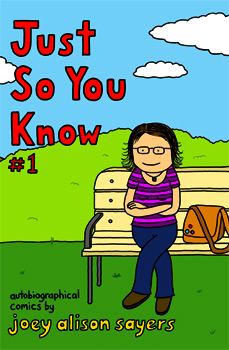 about it?
about it?
JS: Sure. Just So You Know is my first autobiographical comic. It chronicles, in a series of small vignettes, the story of my coming out as transsexual and transitioning to living as a woman. I realized that I was talking to people about my experiences of being trans a lot and it occurred to me that I could put a lot of it down in comic form, so I could talk about other things. It’s all about maximizing the number of things I can talk about. I love talking about stuff. Um, but anyway, the coming out process was super intense. As you might imagine, there are a lot of heavy things that happen. I mean, I was until that point trying very hard to convince the world and myself that I was a guy. And while I was doing a fairly convincing job to the world, I was definitely not fooling myself. So when I decided to transition, it kind of upended everything. I had to come out to all my friends and family, I had to buy a whole new wardrobe, I underwent a second puberty brought on by taking female hormones, I had to navigate maintaining my relationship with my partner of six years (who, by the way, is still my wonderful, supportive partner). Just to name a few. But the thing about it too, is that it was a time full of joy and humor too. I mean, I was having more fun in my life than ever. And really, changing your social position in the world so drastically makes for some pretty hilarious stories. So I decided to focus mainly on those kinds of stories for Just So You Know. The book isn’t without its moments of anxiety or sweetness, but the undercurrent is positive and funny.
KM: Can you describe the experience you had in telling your story in Just So You Know? Was it cathartic or stressful (or anything else) and how do you feel now that you see the finished product?
JS: It was actually a pretty stressful experience telling the story. By the time I sat down to write it, I was past some of the more difficult day-to-day parts of transition. I was pretty well adapted and adjusted to living my life as a woman. But going back and mining my overall experience for material for the book brought up a lot of memories that were painful. And it was like I was reliving them in a way. So I was having trouble sleeping again, and generally just feeling kind of stressed out. But, by the end of it, I was back in the place of positivity. I realized that my good experiences far outweighed my bad. And so as I’ve sat down and scripted the second part of the book, I’ve found that my foundation of happiness and positivity is even stronger.
KM: At Fandomania we like to know what people are fans of, so what are you a fan of?
JS: I’m totally a fan of science fiction. I don’t read as much sci-fi anymore, but I love movies. Especially anything involving time travel. Primer is one of my favorite movies of all time. That movie made my brain explode. I watched it one night, then crammed all my brain pieces back in my head and then woke up the next morning and watched it again. Then I thought about it non-stop for about a week.
(Although, as an aside, I have to say that the best time-travel movie of all time might be Idiocracy, which isn’t really time-travel per se, but I wanted to bring it up with a faulty segue. Ooh! and Futurama, speaking of comedies in which someone gets frozen. No series comeback has made me happier than Futurama.)
Aside from Primer, I’m a huge Firefly/Serenity fan. Oh, and Dollhouse. All of those Joss Whedon projects are just amazing.
Um, Sunshine, that was a great movie.
Let’s see, I’m also a fan of my dog and cat. Named Salamander and Monkey respectively. I’m a fan of mustard. And waffle fries. if there was a waffle fry convention (Waffrycon) I would go every year!
On behalf of myself and my collegues at Fandomania.com I would like to thank Joey Sayers for her time in answering my questions.
All images were used with permission from Joey Sayers. Strips usually appear on the website four panels across, images here have been modified for easier viewing, also with permission.


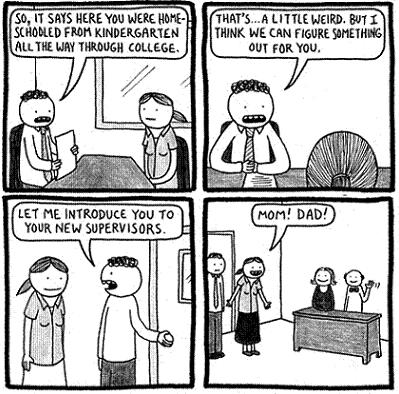
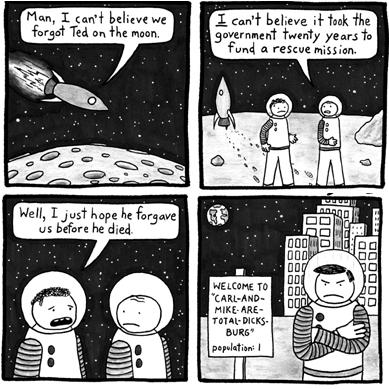
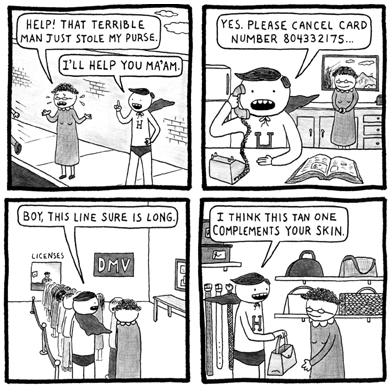
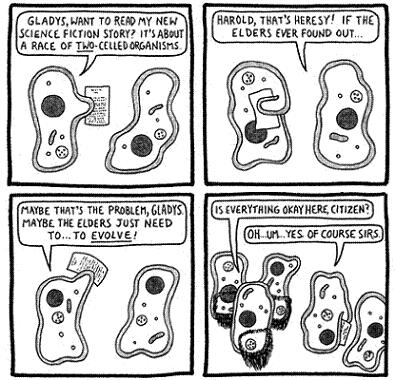
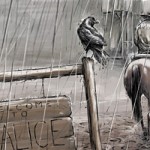
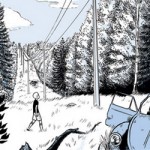
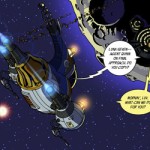
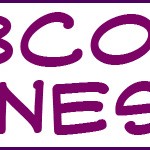
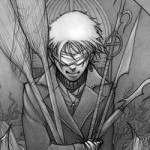
I loved your book! And the way your comics make me laugh and then frown.
Pingback: Scholars and Rogues » Pigeon Power: Nota Bene for 19 October 2009
Pingback: Scholars and Rogues » Pigeon Power: Nota Bene for 21 October 2009